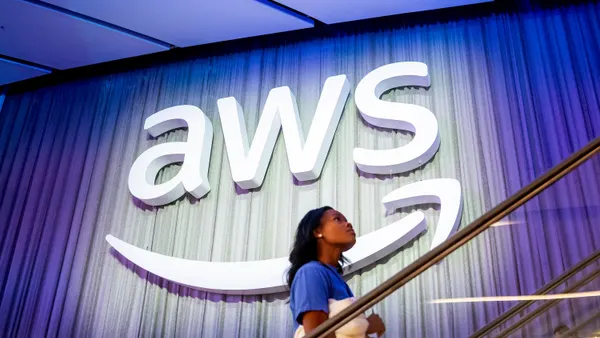Dive Brief:
-
As the Internet of Things (IoT) gears up for an explosion over the next few years, IBM is upping its stake in the market with several big clients. Sears Home Services is using IBM's predictive maintenance IoT platform to improve service technician and delivery efficient, saving the company millions of dollars, according to an IBM report.
-
Golden State Foods is using IBM's automotive IoT platform to optimize food distribution through analysis of weather, traffic and telematics factors and improve driver safety with IoT wearable tech, according to the report. GSF is also extending the IoT to restaurant customers and applying machine learning and predictive analytics to operational efficiency.
- IBM extended its contract and added the IBM Watson IoT platform to the U.S. Army's Logistics Support Activity in September, according to a company announcement. The extension will use IoT technologies for vehicle maintenance failure predictive and prescriptive capabilities.
Dive Insight:
The number of devices in the IoT is expected to rise to 20.4 billion by 2020, and business IoT spending in 2017 alone is expected to account for 57% of total IoT spending, according to Gartner. Individual vendors have yet to establish dominance in the market, and IBM is trying to claim its own stake among other pushes in the cloud, blockchain and Big Data spheres, among others.
IoT offers companies to track field operations, smooth digitization efforts and ERPs and reduce manual intervention. But to reap these benefits and successfully keep up with IoT expansion, businesses need to invest in an an IoT-literate workforce, which is not an easy task.
Approximately 68% of IoT professionals, developers and vendors said they have difficulties hiring IoT talent, which requires individuals to have especially wide-ranging skill sets involving Big Data, cloud software, AI, IT security and embedded electronics. With additional difficulties brought on by a general tech talent shortage, many companies are turning an eye to international education and training programs to cultivate current employees for new IoT roles.
With everything from phones to building controls to human brains on the IoT, corporations are having to rethink networks to accommodate more devices. With more access points to networks popping up daily, the "Achilles heel" of the IoT, security, is garnering more attention.
IBM released a Watson-enabled security service in July which helps developers test IoT device security throughout development. With close to 60% of organizations testing IoT devices during production only, such measures are important first steps, but companies need to instill a security-conscious culture throughout the IoT pipeline.













